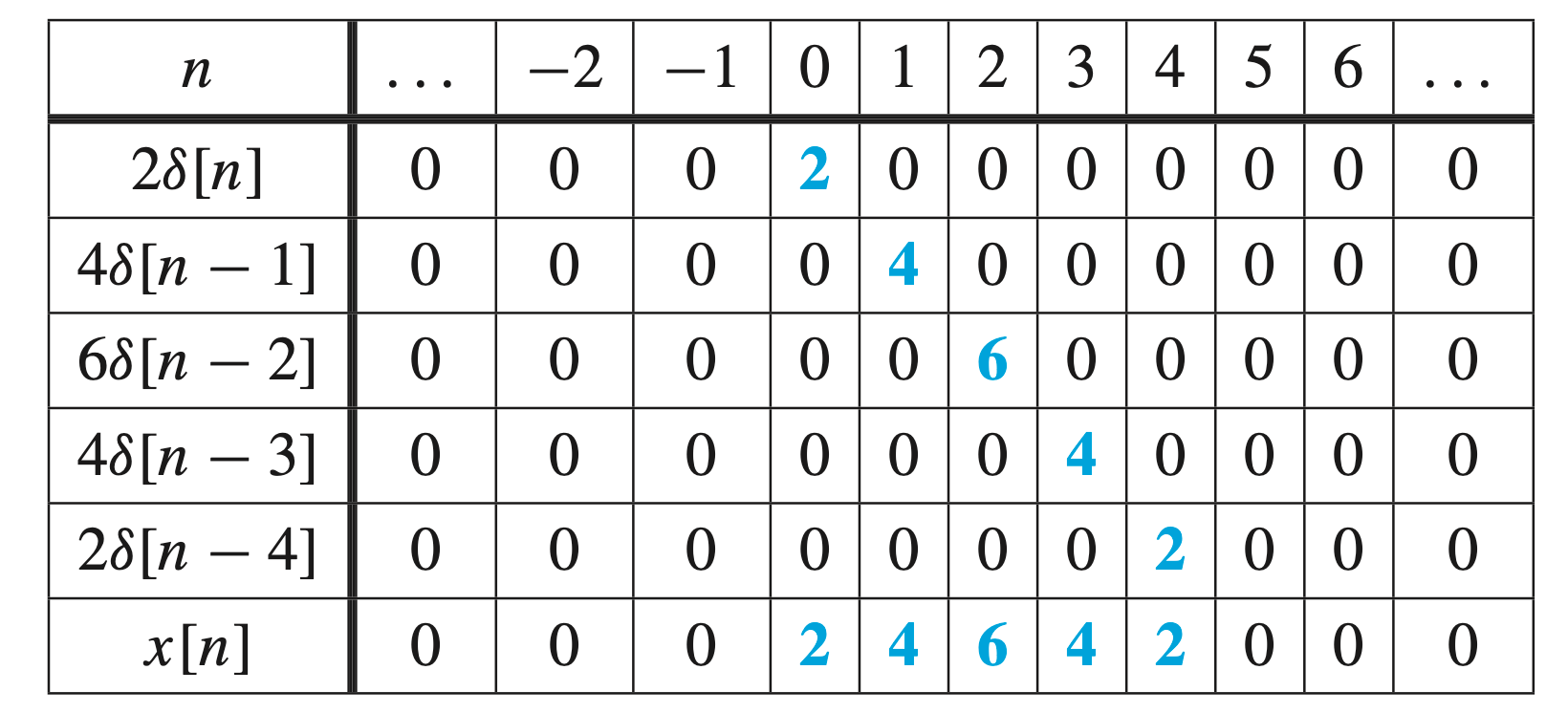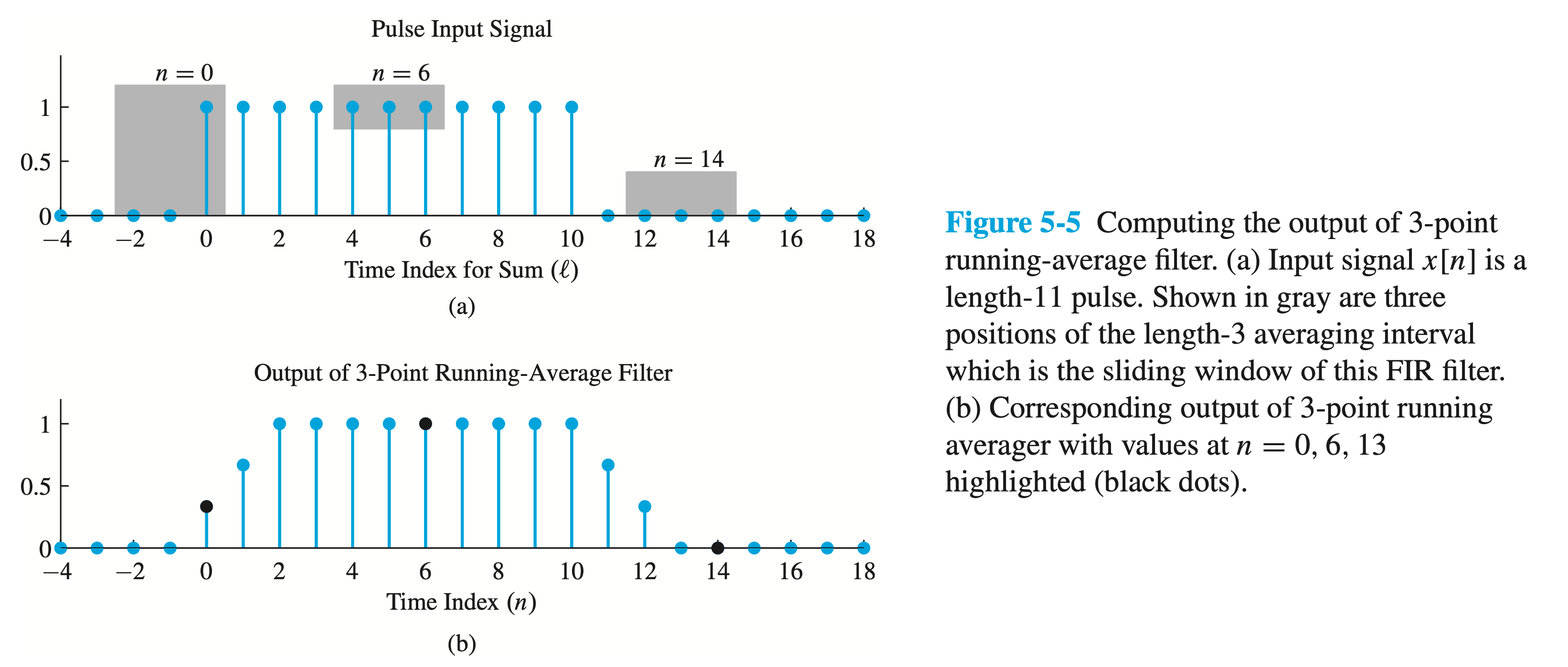FIR Filters
Sources:
- James McClellan, Ronald Schafer & Mark Yoder. (2015). FIR Filters. DSP First (2nd ed., pp. 147-193). Pearson.
Discrete-Time Systems
Sequence: a discrete-time signal1.
Discrete-time system or filter2: a function for transforming one sequence, called the input signal, into another sequence called the output signal.

In general, we represent the operation of a discrete-time system by the notation
The Running-Average Filter
A running average or moving average system: the output is the average of some consecutive values of the input. Such as
The equation like
A filter that uses only the present and past values of the input is called a causal filter. Thus
Example
For a input sequence

we define an output sequence

with
The General FIR Filter
Definition
We define a
- FIR system: Finite Input Response system. Because the impulse response sequence
- The 3-point noncausal running average
- the coefficients
- According to
- Note that a noncausal system can be represented by altering
- Note that a noncausal system can be represented by altering
- Usually the
- It follows from
A second defnition:
which can be extended to
Example
Figure 5.4 llustrates how the causal FIR filter uses

- the weighted average is calculated over the (gray) sliding window of
- When the input signal
The Unit Impulse Response and Convolution
In this section, we introduce three new ideas: the unit impulse sequence, the unit impulse response, and the convolution sum.
We show that the impulse response provides a complete characterization of the FIR filter, because the convolution sum gives a formula for computing the output from the input when the unit impulse response is known.
Unit Impulse Sequence
The unit impulse:
This notation is also known as the Kronecker delta function.
Shifted Unit Impulse Sequence
Here is the tabular of

For a shifted unit impulse such as 
The shifted impulse is a concept that is very useful in representing signals and systems. For example, we can show that the formula

It turns out that any sequence3 can be represented by a sum of scaled shifted impulses . The equation
Unit Impulse Response Sequence
The output from a filter is often called the response to the input.
When the input is the unit impulse,
Notation of unit impulse response:
When the input to the FIR filter
Note that because each
![Unit impulse response and coefficients]()
In other words, the impulse response
- In following chapter, we'll show that this characterization is also true for the much broader class of linear time-invariant (LTI) systems.
Since
The Unit-Delay System
One important system is the operator that performs a delay or shift by an amount
When
The delay system is actually the simplest of FIR filters.
The impulse response of the delay system is obtained by substituting
FIR Filters and Convolution
Since the filter coefficients in
The terminology convolution emphasizes that it's an operation between two sequences.
We use a star
Later, in Section 5-7, we will prove that convolution is the fundamental input-output algorithm for a large class of very useful filters that includes FIR filters as a special case. We will show that a general form of convolution that also applies to infinite-length signals is
This convolution sum
The Length of a Convolution
If
通俗地说,
以下面example为例,
而convolution是从下标0开始的(
When the signals start at
Example

Given impulse response
The output
Filtering the Unit-Step Signal
In previous sections, we have described the FIR filtering of finite-length signals.
But the input signal can also have infinite duration.
An example is the unit-step signal which is zero for
The symbol
So when we want the input signal to be the unit step we write
Property of Convolution
convolution is:
- commutative:
//Proof: TODO
See↩︎
Strictly speaking, a filter is a system that is designed to remove some component or modify some characteristic of a signal, but often the two terms are used interchangeably.↩︎
Remember that a sequence is a discrete-time signal.↩︎
这里所谓"length"指的是support set的长度. n可以是无限的, 因此
